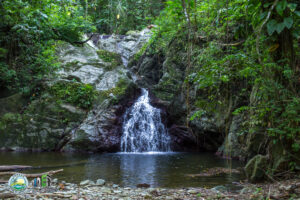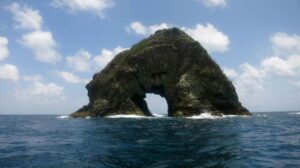By Sue-Ann Wayow
THE north-eastern part of the island of Tobago is now officially a United Nations Educational, Scientific and Cultural Organisation (UNESCO) Man and the Biosphere (MAB) Reserve.
This means that Tobago is now home to the largest MAB site in the English-speaking small Caribbean island states, the only one larger is located in Guadeloupe, which is a French territory.

On Wednesday at 7.45 am local time, the MAB Secretariat, based at UNESCO’s Division of Ecological and Earth Sciences, at the UNESCO headquarters in Paris communicated their decision to the government of Trinidad and Tobago.
In a press by the Ministry of Planning and Development, the ministry stated that Planning Minister Camille Robinson-Regis and Ancil Dennis, Chief Secretary of the Tobago House of Assembly (THA), jointly announces the achievement which directly contributes to achieving Trinidad and Tobago’s commitment to the global Sustainable Development Goals (SDGs).
The ministry stated, “This means that Tobago’s North-East Tobago Man and the Biosphere Reserve covers over 835 km² and encompasses three protected areas, Tobago Main Ridge, which is the oldest protected tropical forest reserve in the world; the proposed North East Marine Protected Area; as well as 15 communities with rich historical and cultural heritage in north-east Tobago which are home to approximately 10,000 residents.”

The ministry stated that the award was also made possible with the tremendous support of the Environmental Research Institute Charlotteville (ERIC), Tobago and the environmental civil society groups in North East Tobago.
The THA, with support from the Planning Ministry, developed their proposal in approximately two years for submission to the MAB Programme, which is intergovernmental in nature and aims to establish a scientific basis for enhancing the relationship between people and their environments while combining the sciences to improve human livelihoods and safeguard natural and managed ecosystems.
Robinson-Regis said, “We are continuing to punch above our weight in the global arena. We are blessed with some of the richest historical, cultural and natural heritage in the world, and our pride and sensibility in protecting our gifts will continue to be rewarded.”

She added that protecting biodiversity resources also increases foreign exchange earning potential, because the 5th National Report of Trinidad and Tobago to the Convention on Biological Diversity (CBD) in 2017 revealed that T&T’s resources were valued in the region of US $100 million per year in terms of soil protection, water purification services as well as recreation and tourism-based activities.
Kwesi Des Vignes, the THA Secretary for Infrastructure, Quarries and the Environment said, “This is yet another milestone for Tobago and the nation on a whole. Trinidad and Tobago is a small nation with a fierce spirit. North-east Tobago has always been the pearl of our paradise so it is no surprise that the area is worthy enough to attract the attention of the world.” The award presents immense opportunities for business, culture and the arts and education he added.
Due to the challenges in the wake of the Covid-19 pandemic, Des Vignes and the THA believe that the MAB designation has placed Trinidad and Tobago in an advantageous position as it relates to branding as a premier eco-tourism destination, while attracting financial and technical support from the international community.
Benefits to Trinidad and Tobago of the UNESCO Man and Biosphere Award according to the ministry:
- Sustainable green and blue economic activities, including but not limited to tourism, fisheries, agriculture, cultural heritage activities, research and education will be incentivised.
- The UNESCO MAB Programme is a perfect tool for economic recovery after the Covid-19 pandemic especially for tourism and attracting international support.
- Once well implemented, the UNESCO Site will be Tobago’s strategic lead investment to prepare an enabling institutional and organisational environment for future, scaled up investment by multilateral agencies and the private sector in sustainable, ecosystem-based blue and green economy in North East Tobago, with significant beneficial spill-over effects on Tobago as a whole and the entire nation.
- Designation as an UNESCO MAB Site does not require the formation of new laws and does not infringe on the rights of any citizen, resident, business person or property owner.
![]()










